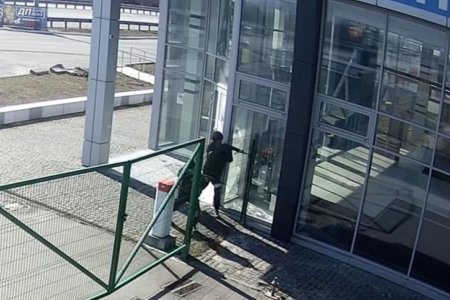
Ukrainian police investigators have named a Russian commander suspected of a key role in the killing of Iryna Filkyna and at least twelve other civilians massacred in Bucha by the Russian invaders. Artem Tarieiev b. 1995(, the commander of the 234th Air Assault Regiment (part of the Russian Air Force’s 76th Division) is believed to have issued an order on 5 March 2022 to shoot anyone who appeared around the intersection of Yablunska and Vodoprovidna St in Bucha, with this evidently including civilians, some of whom would have been trying to use an evacuation point to flee the occupied city.
It is a war crime to target civilians, and the charge laid against Tarieiev is, accordingly, under Article 438 § 2 of Ukraine’s Criminal Code. The notification of charges, a copy of which is published by Ukraine’s Prosecutor General, specifically refers to cases where the Russians shot at and killed civilians, as well as at least one case where the person managed to escape into a shelter.
Although the names are redacted in the copies posted on the prosecutor’s site, the Bucha City Council reported on 30 December that one of the victims was Iryna Filkyna who lived in Bucha and worked for the firm ‘Epicentre’.
Tarieiev’s order was issued at 10 a.m. on 5 March 2022, with Iryna, who was riding past on her bicycle at around 11.15 that day becoming one of the first victims. The Russians cannot have been in any doubt that the 52-year-old woman on a bike was a civilian, yet they opened fire, riddling her body with at least 15 bullets. The photo showing Iryna’s hand and red manicured fingernails did, indeed, become one of the symbols of the atrocities committed by the Russians during their occupation of Bucha and other parts of Kyiv oblast.
Iryna Filkyna was one of thirteen victims killed by the Russians during the three days after Tarieiev’s order. All were civilians, most of whom were riding bicycles or in cars without any marking that could have led the Russians to believe that they held Ukrainian soldiers. One civilian had simply walked out of his house, when he was attacked by the Russians. He died from a bullet in the stomach.
It is clear that Ukraine will only be able to put Tarieiev on trial if he is captured, since Russia would not hand him over. It is, nonetheless, vital, as the Council points out, to identify all of those believed to have committed such crimes, as a step towards ensuring that the perpetrators of the horrific atrocities committed in Bucha, as in other Ukrainian cities, are brought to justice.
It is important also to remember such crimes and their victims at a time when there are clear signals that Ukraine is likely to be placed under pressure to agree to a ‘peace deal’ involving acceptance of ongoing Russian occupation of major parts of Ukrainian territory. We know about the atrocities committed in Bucha, Izium and other Ukrainian cities from which the Russians were driven out. There are no grounds for believing that such crimes have not been committed in those parts of Ukraine that remain under occupation.
Nor is there any reason for believing that the war crimes are somehow isolated incidents and not state policy. In April 2022, as details and harrowing images came to light of torture chambers, killings in cold blood and mass graves, Russian leader Vladimir Putin signed a decree ‘honouring’ the 64th Motor Rifle Brigade which was believed to be behind many of the atrocities. Putin spoke of “mass heroism and daring, tenacity and courage” about men suspected of rape, torture, indiscriminate killings and looting,
On the second anniversary of Russia’s retreat from Kyiv oblast, Andriy Niebytov, Deputy Head of Ukraine’s National Police, reported that the bodies of 422 civilians killed by the Russians had been uncovered after the liberation of Bucha alone, while almost 1200 bodies had been found in the Bucha area altogether (See: The youngest victim of Russia’s Bucha atrocities was less than two years old )



